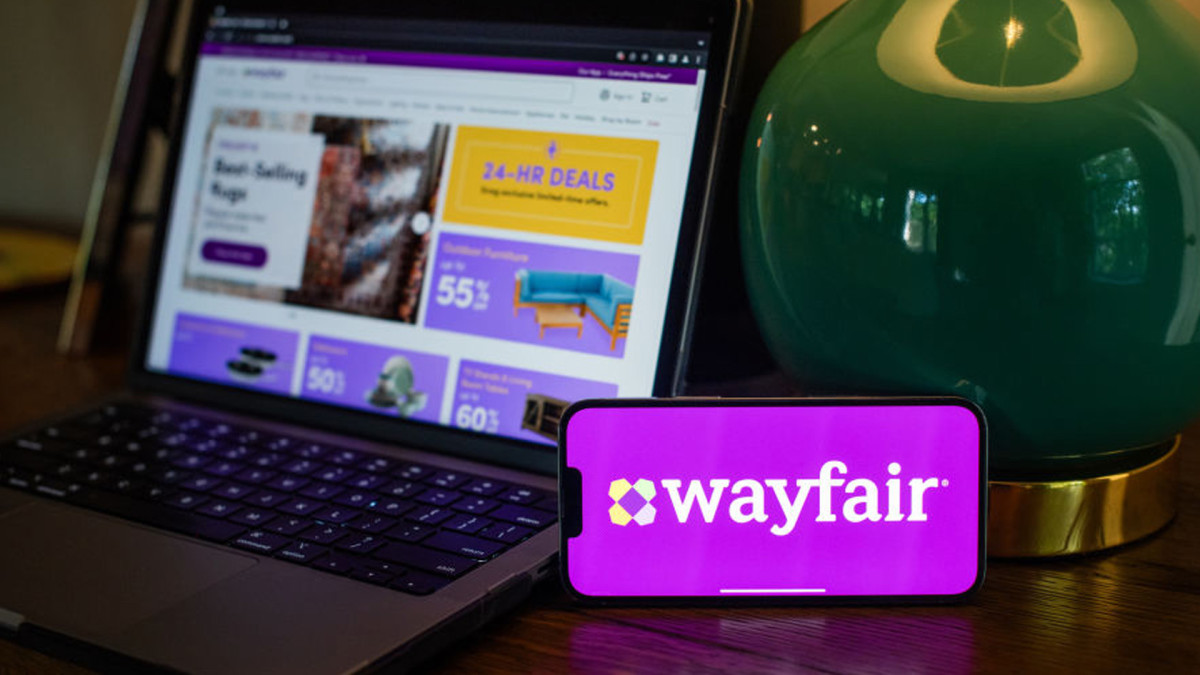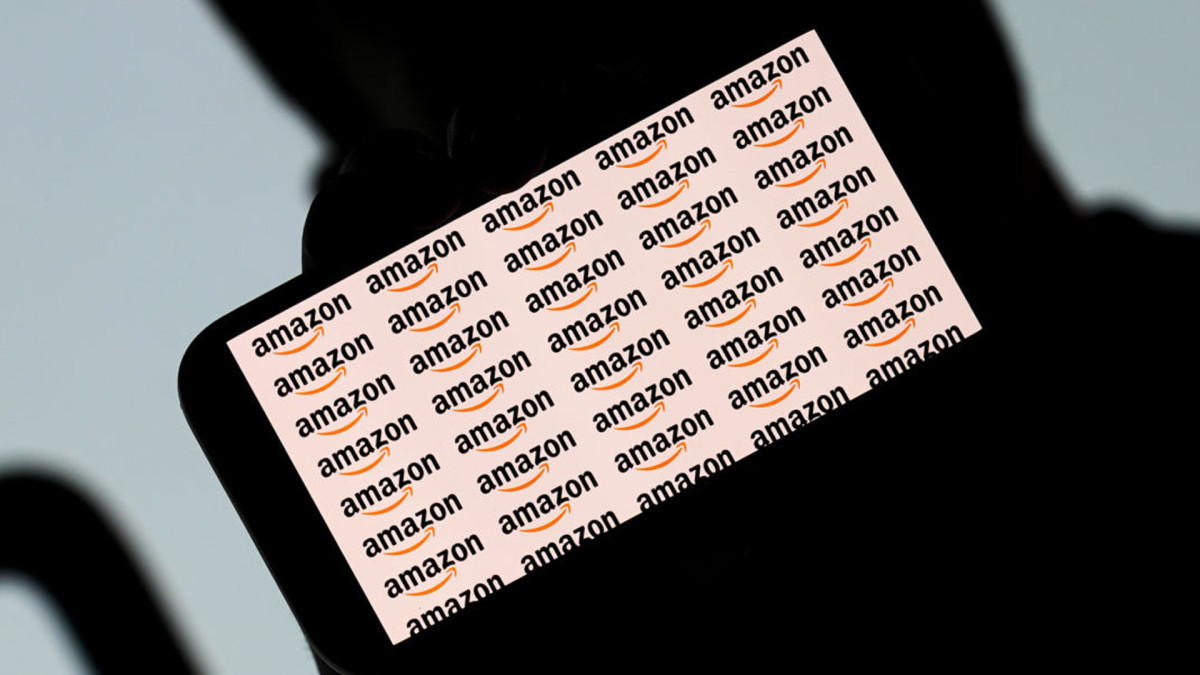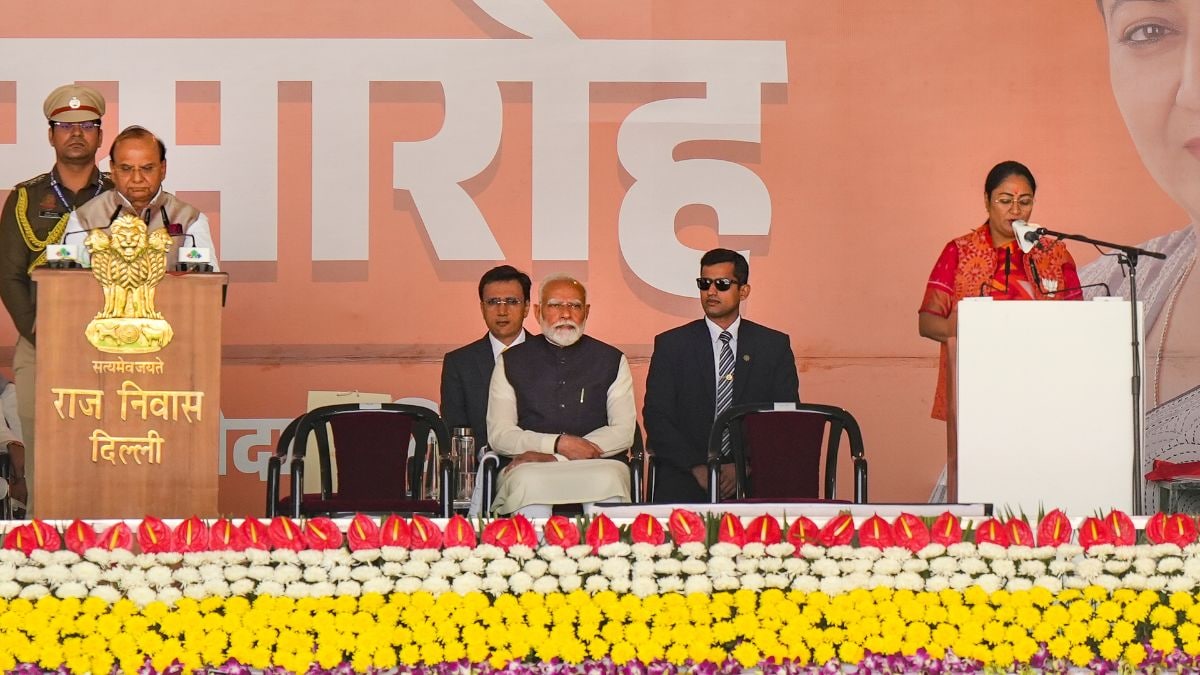Evolving and Improving the Participant Rollover Process
Rolling Over an Employer Retirement Plan to an IRA Doesn't Have to Be Cumbersome

The Great Wealth Transfer is underway with Baby boomers and the Silent Generation retiring and passing down a total of $84.4 trillion in assets through 2045. When leaving your job, you can typically cash out your 401(k) or roll it over into a different retirement account like an IRA. This process often requires a lot of paperwork, check handling and coordination between the retirement recordkeeper and the investment manager. Broadcast Retirement Network's Jeffrey H. Snyder discusses how to improve and streamline the rollover process with SS&C's Jacqueline Rynn.
JEFFREY H. SNYDER, BROADCAST RETIREMENT NETWORK
(0:04) This morning on BRN, evolving and improving the participant role over process. (0:10) Joining me now is Jacqueline Rinn of S, S&C Technologies. (0:14) Jacqueline, great to see you.
(0:16) Thanks for joining us in the program this morning.
JACQUELINE RYNN, SS&C TECHNOLOGIES
(0:19) Good morning, Jeffrey. (0:20) How are you?
JEFFREY H. SNYDER, BROADCAST RETIREMENT NETWORK
(0:21) I'm hanging in there. (0:23) I'm hanging in there. (0:23) But, you know, I'm excited to talk about, talk over rollovers because my understanding, and we're going to get into this, is that maybe the market up to this point hadn't been as efficient in terms of facilitating that.
(0:34) I know you and S, S&C have some great solutions we're going to be talking about this morning. (0:37) But let's start with some basics here. (0:41) How big is the rollover market today in 2025?
JACQUELINE RYNN, SS&C TECHNOLOGIES
(0:44) Yeah, so looking ahead to 2025, you know, the rollover, the IRA rollover market is estimated to be about $900 billion. (0:52) So, yeah, so the majority of that is going to flow from 401k plans and employer sponsored plans this year.
JEFFREY H. SNYDER, BROADCAST RETIREMENT NETWORK
(1:01) I mean, that is a lot. (1:03) That is sizable. (1:04) That's nothing to sneeze at.
(1:06) And again, you know, it's so important to be able to facilitate that. (1:09) We'll talk about that in a few minutes. (1:11) But let's talk about the importance of rollovers, because there are a lot of different members of the retirement ecosystem.
(1:18) How important, what's the criticality of rollovers for record keepers, advisors, the employer, all these different constituencies that are in and around the retirement system?
JACQUELINE RYNN, SS&C TECHNOLOGIES
(1:31) Yeah, yeah, exactly. (1:33) Right. (1:33) And there's a number of different audiences that kind of compromise the rollover model, if you will.
(1:40) And they all have, you know, kind of they come at it from different points of view. (1:43) You know, and I think if we come at it kind of the individual on the front line, so to speak, is the participant. (1:50) Right.
(1:51) And as participants age and they look to consolidate assets and they're preparing for retirement, they're really looking for guidance. (1:58) Right. (1:59) And they're also looking for a streamlined rollover process.
(2:03) Really difficult for, you know, for individual participants to go ahead and open up an IRA and then interface with their plan sponsor and record keepers to fill out a host of distribution forms, input all of the information, IRA account numbers, all of that good stuff on a form and have it be in good order. (2:22) So they're kind of challenged there. (2:24) And we want to kind of look to see, I think, as an industry, what we can do to guide them and make that easier for them.
(2:31) Plan sponsors kind of come at it from a little bit of a different point of view. (2:34) Right. (2:34) Plan sponsors of fiduciaries, they want to make sure that they're providing their participants choice.
(2:39) So when participants are getting ready to retire or they're consolidating assets from previous job changes, (2:46) they want to make sure from a rollover perspective, (2:48) they can present a really comprehensive product that gives the participant choices from an IRA perspective, (2:56) automates the processes and probably most importantly for plan sponsors, (3:00) really reduces that time frame or the time out of market that a participant will spend. (3:06) I think from a record keepers perspective, you know, the record keeper kind of being the facilitator and the flow and the movement of all of this, they're really looking for streamlined processes.
(3:16) Right. (3:17) Record keepers have multiple distribution process flows in place today. (3:21) So they're looking to leverage or create technology that allows them to make more efficient transactions and process fewer checks.
(3:30) Right. (3:30) In our day and age, lots of issues can arise with checks. (3:36) Participants don't deposit them in IRAs within the 60 day limit.
(3:41) You know, checks get returned to record keepers. (3:43) Checks can open up this whole process to, you know, bad actors and kind of fraud issues. (3:50) So they're really looking to kind of streamline this process and leverage ACH and create efficiencies for participants and plan sponsors alike.
(3:59) And then I think last, but certainly not least, our advisors. (4:03) Right. (4:03) When we look at the size of the rollover marketplace, the majority of these rollovers, certainly at least half of them will be intermediated by advisors.
(4:11) So we really need their engagement in the process as well. (4:14) Clearly, they're looking to guide participants, but they're looking for a more streamlined process to move money out of the plan, into the IRA accurately and efficiently for their investor clients.
JEFFREY H. SNYDER, BROADCAST RETIREMENT NETWORK
(4:27) You know, I'm chuckling to myself because, as you know, I'm a reform record keeper. (4:30) I've been there having to chase down rollover money within the 60 day time frame. (4:36) So I'm very familiar with it.
(4:38) Suffice to say, is it a smooth process today? (4:41) It's had to have gotten better since I started in the late 1990s, though, Jacqueline.
JACQUELINE RYNN, SS&C TECHNOLOGIES
(4:45) Yeah, well, you know, I think I think as an industry, we'd all we'd all like it to be better, better than where it is today. (4:52) Right. (4:52) But, you know, just if we look at it, take an example.
(4:55) Right. (4:55) You know, if a participant looks to initiate a rollover from their plan today, first of all, they've got to open up the IRA. (5:01) Right.
(5:02) That's got to be done, whether they do it themselves, self-directed or they do that with their advisor. (5:07) And then once the account is opened, then they need to interface with their plan sponsor. (5:12) And ultimately, the record keeper is the plan administrator.
(5:16) They have to fill out forms providing the IRA account information, the name of the institution. (5:21) They need to provide funding instructions. (5:24) And then those forms all need to be processed.
(5:27) Right. (5:27) Whether they require plan sponsor approval or the record keepers oversight and approval to process the transaction. (5:34) So basically, in a paper based world where those distribution forms are paper based, whether they're downloaded from a plan sponsor website or so forth, that whole process from submission to approval to then moving the money out of the plan to the IRA, it can take anywhere from like 38 to 42 days to process.
(5:56) Right. (5:56) Assuming all of that paper, that paperwork is completed accurately. (6:01) So I think as an industry, we're really looking to see what we can do to streamline that process.
JEFFREY H. SNYDER, BROADCAST RETIREMENT NETWORK
(6:08) Jacqueline, we live in the digital age. (6:10) And as you were talking, I have my phone here. (6:13) I can transfer money to you.
(6:14) I could and I'm not paying you for this appearance at all. (6:16) But I could Venmo you money right now. (6:20) So are there challenges with it seems to me that there's challenges to receiving money back and forth between one carrier to another, one record keeper to another.
(6:29) And then I have to think that there could be some fraud issues as well.
JACQUELINE RYNN, SS&C TECHNOLOGIES
(6:34) Yeah. (6:35) Yeah, there there definitely are. (6:36) Well, you know, I mean, I think in this scenario, right, where the participant is filling out the information and so forth, they're the originator of the information.
(6:48) So if you know if they're completing a form, they have to enter in the right IRA account number. (6:54) Right. (6:54) Are they using the right account number?
(6:56) Do they do a typo? (6:57) Things like that. (6:58) So there's basically data integrity issues.
(7:00) Right. (7:01) If participants are giving you the right information. (7:04) If a participants on a phone with a call center rep again, they have to communicate account numbers to call center reps and everything.
(7:11) So the call center reps are keying it correctly to the to the distribution, you know, into the distribution instruction. (7:16) So I think all of that kind of just opens us up for data integrity issues from a processing standpoint. (7:23) But then, as we all know, as an industry, right, there are bad actors that are out there that regularly are getting much more sophisticated through phishing and a number of different things.
(7:33) And extricating information from participants and getting to the point where they can take over accounts when they can take over accounts. (7:41) A lot of these bad actors are looking to initiate these kinds of transactions. (7:45) So when checks get cut and mailed to participants home, that opens up the interception of these assets.
(7:53) So when you look at the rollover model, to the extent that you can automate it, that you can leverage standing IRA instructions, that you can leverage ACH to facilitate the movement of the plan into the IRA directly. (8:09) So the participant doesn't have to handle a check or worry about the 60 day rule. (8:14) Much more efficient model for everyone.
(8:17) Right. (8:18) Money gets where it needs to be. (8:20) The participants secure.
(8:22) Record keepers not dealing with correcting, you know, bad information that was entered. (8:27) Dealing with stale data checks. (8:29) Reconciling all that information.
(8:31) Much more efficient in that respect. (8:33) When we can kind of, quote unquote, eliminate the forms.
JEFFREY H. SNYDER, BROADCAST RETIREMENT NETWORK
(8:37) Let's talk about rollover central because, you know, again, thinking about the process that I used to use when applying it, obviously it's gotten better in the last 30 years. (8:48) But how does rollover central, which is through SS&C, how does that facilitate a much more streamlined process?
JACQUELINE RYNN, SS&C TECHNOLOGIES
(8:56) Yeah, well, you know, rollover central is a technology application that, you know, SS&C knowing what we know about record keeping. (9:04) We really kind of took it on to say there's got to be a better way to rollover transactions for participants. (9:10) So I think the first thing is we really developed it with the record keeper in mind.
(9:15) So, you know, from a record keepers point of view, they can implement a secure SSO protocol to cut to allow participants to come into rollover central. (9:24) And then the number of transaction processing APIs with SS&C. (9:28) And that's kind of the extent of the information.
(9:31) But the way that rollover central works is when a participant is securely access or move to the front door of rollover central, if you will, by their record keeper, that participant can be presented with a choice of IRA options. (9:47) Right. (9:47) So they can look at robo advice solutions, self-directed solutions, and they have the ability to open up an IRA.
(9:54) Rollover central is integrated with multiple IRA providers. (9:58) So through, you know, different technology protocols, XML handshakes, very secure transaction base. (10:05) We're able to open up new IRAs for participants real time and within a single web session, get the IRA account number assigned.
(10:13) Now, once that IRA account number is assigned, that's kind of the first part of the rollover process, right? (10:19) That's the first step. (10:21) The IRA account is open.
(10:22) But the second and in many ways, the more complex step is then to get the assets moved from the participants 401k plan into their IRA. (10:31) And the beauty of rollover central is that once that account is opened on the back end, rollover central interfaces with the record keeper and passes it for all intents and purposes and API via API, a rollover transaction request with the IRA account number, all the participants information, and probably most importantly, the ACH instructions for that IRA provider. (10:56) So the record keeper receives that information, and then can process that transaction, batch it with their nightly processing, and they're able to move those assets directly from the plan to the IRA provider as part of their nightly batch.
(11:11) And so, you know, again, that's kind of eliminating checks. (11:15) It's a direct deposit scenario for the participant. (11:17) And maybe even best of all, rollover central provides a reconciliation process, where we're always monitoring all of the transactions open through rollover central, and then the processing and movement of assets to those IRAs between record keepers and IRA providers.
JEFFREY H. SNYDER, BROADCAST RETIREMENT NETWORK
(11:34) Yeah, it sounds like you shorten the time period of 38 to 40 days, which has to make a lot of people feel good, including the recipient record keeper, but also the participant and the plan sponsor, all those constituencies you mentioned. (11:47) So, you know, you talk about APIs, XML to pull data. (11:51) I'm not a techie, but I've been around enough techies to know some of it.
(11:54) Is this difficult to implement, whether you're a record keeper, an advisor, someone in the ecosystem that we talked about earlier?
JACQUELINE RYNN, SS&C TECHNOLOGIES
(12:03) It really isn't difficult to integrate with a record keeper. (12:07) You know, we clearly tie into with their existing distribution processes. (12:11) But as I said, using SSO protocols and APIs is a fairly standard thing in our industry.
(12:18) You know, and I think the same for advisors, right, to the extent that these services are available at the plan level, it's pretty easy for an advisor to avail themselves. (12:27) You know, I think the other advantage, too, is that when we think about it, you know, for new IRAs, we can facilitate new IRA account openings. (12:36) But for many participants, particularly those getting ready to retire, they probably already have an existing IRA.
(12:43) And so they're really looking to consolidate assets. (12:45) And the great thing about Rollover Central is you can open up a new IRA or you can consolidate assets into existing IRAs. (12:53) And for record keepers, right, a fair number of participants will call into call centers to get assistance with IRA rollover transactions.
(13:03) And record keepers can allow their call center reps to utilize the Rollover Central technology to process money movement from the plan into existing IRAs. (13:15) And they can avail themselves of this very same comprehensive, streamlined, no-formed rollover flow using ACH instructions as well. (13:25) So it creates a lot of efficiencies there in the processing model.
JEFFREY H. SNYDER, BROADCAST RETIREMENT NETWORK
(13:29) Yeah. (13:30) So just kind of tie it all together. (13:32) I mean, it's efficient.
(13:33) It's streamlined. (13:34) Money gets from point A to point B in a shorter period, a much shorter period of time. (13:38) But what's the overall return on investment if I'm thinking about whether or not to use the system, you know, apply it to my business model?
(13:48) What's the net gain and the return on investment here?
JACQUELINE RYNN, SS&C TECHNOLOGIES
(13:51) Yeah. (13:52) So I think, you know, the way to look at it is I think, you know, for, I think when you kind of think about those different audiences that we talked about for the participant, it's very streamlined, right? (14:05) They don't have to worry about checks.
(14:06) They're not kind of the overseers, kind of the, you know, they don't have to have stewardship over what, you know, what step in the process is the rollover transaction. (14:15) I think advisors kind of fall in that bucket too, in terms of moving money for their constituent clients. (14:22) From a recordkeeping perspective, I mean, I think you look at the process in that, you know, recordkeepers are regularly in RFPs answering questions about rollover services.
(14:33) How do they facilitate it? (14:34) How do they ensure choice and so forth? (14:37) So I think Rollover Central kind of gives them this kind of baked in middleware that they can kind of snap in fairly easily into their recordkeeping platform.
(14:47) And I think it allows them to, you know, first of all, when you think about it, reduce the number of checks that they're dealing with in rollover processes. (14:56) Again, we talked about it earlier, but cutting the checks, they don't get routed to the correct place. (15:02) They get returned to the recordkeeper.
(15:04) That all requires reconciliation and backend administration oversight. (15:09) So I think to the extent that you can limit that. (15:11) The other thing is, physically, if you're printing and mailing checks, there's a cost to that.
(15:17) You know, that's like a dollar, $1.50 a transaction. (15:20) And then on top of it, if it exposes you to fraud, if you weren't cutting as many checks because you were facilitating the movement via ACH, that kind of reduces a lot of those fraud risks. (15:32) So I think there's a lot of advantages there.
JEFFREY H. SNYDER, BROADCAST RETIREMENT NETWORK
(15:35) Yeah. (15:36) And let's not forget the outbound, the cost to do an outbound call or take an inbound call, the back and forth. (15:41) I mean, I remember that that is expensive.
JACQUELINE RYNN, SS&C TECHNOLOGIES
(15:44) Yeah, you're exactly right. (15:47) I mean, when you think about it for participants, and a lot of participants do need guidance making these transactional requests, but when they call into a call center, I mean, your average time, if I'm on the phone with a rollover transaction, it probably costs a recordkeeper about $50. (16:03) And the key thing here is that it's probably not resolved within a single call.
(16:09) So they'll process the initial request, but then there are follow-up requests with the participants as they look to understand what's the status of my money. (16:18) And that requires research for recordkeepers and so forth. (16:21) So there's a lot of, I think, cost savings from a servicing expense when you think about how much time is spent by call center reps addressing participants' rollover needs and questions.
JEFFREY H. SNYDER, BROADCAST RETIREMENT NETWORK
(16:33) Yeah, absolutely. (16:34) And I think just anecdotally, it addresses some of the leakage. (16:38) You know, if you can have money go out of a plan into another plan very quickly or an IRA, someone can be able to find their money without fail.
(16:46) Jacqueline, we're going to have to leave it there. (16:47) Great to see you. (16:48) Thanks for the, I love talking rollovers.
(16:50) I mean, it's been a while since I've done it, but I love talking about it. (16:53) And we look forward to having you back on the program again very soon.
JACQUELINE RYNN, SS&C TECHNOLOGIES
(16:56) Yeah. (16:56) Well, thank you, Jeff. (16:57) We appreciate the opportunity.
JEFFREY H. SNYDER, BROADCAST RETIREMENT NETWORK
(17:00) And don't forget to subscribe to our daily newsletter, The Morning Pulse, for all the news in one place. (17:04) Details, of course, at our website. (17:07) And we're back again tomorrow for another edition of BRN.
(17:10) Until then, I'm Jeff Snyder. (17:12) Stay safe, keep on saving, and don't forget, roll with the changes.
What's Your Reaction?





















































